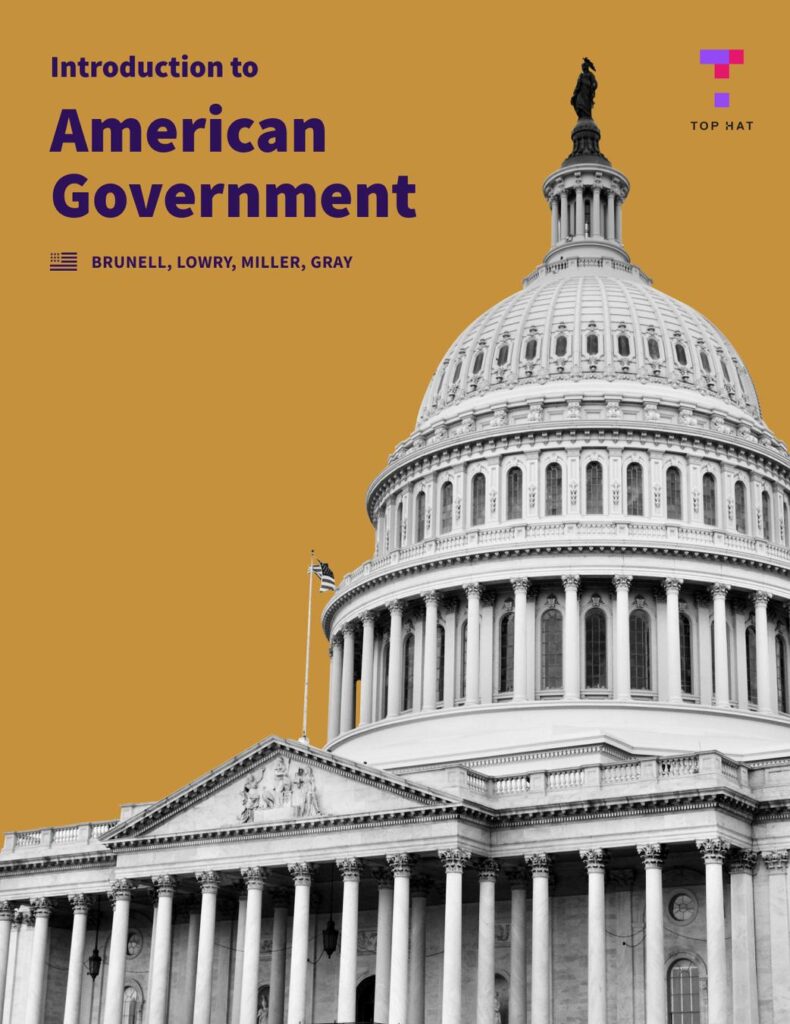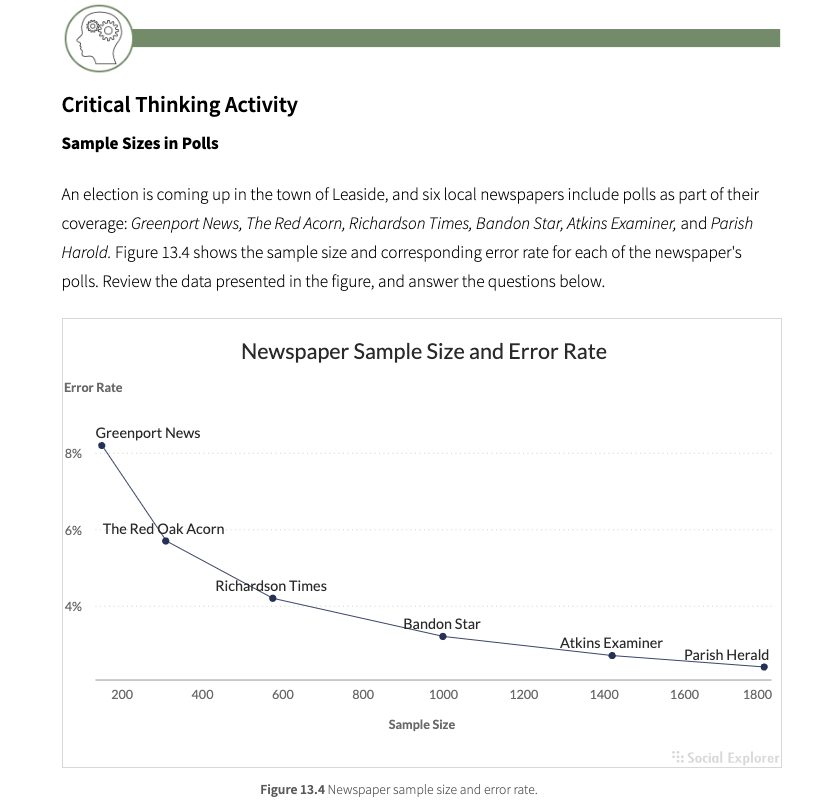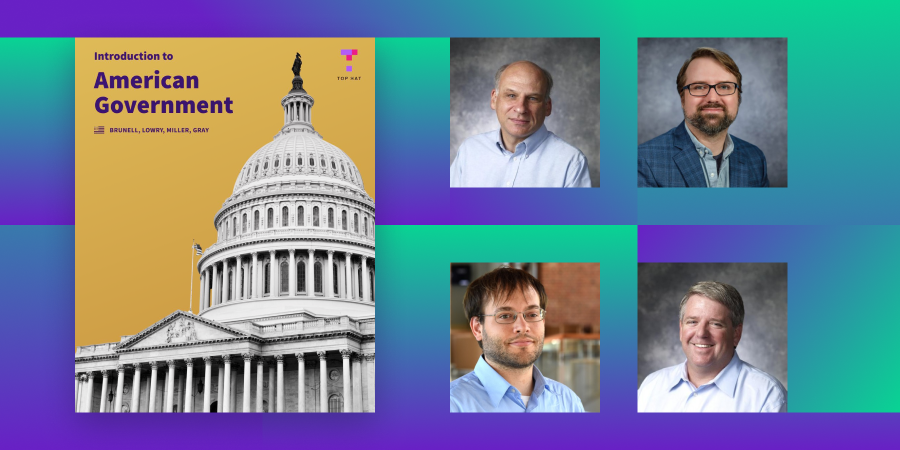November 5, 2024. It’s when millions of Americans will flock to polling stations to vote for the country’s next president. As many instructors know, leading meaningful conversations about politics shouldn’t only take place the week of the election. What happens in the months prior—and even the weeks after—matter just as much. We recently sat down with the authors of Top Hat’s interactive An Introduction to American Government eText. They share how their book offers a real-time look at the latest political advancements and appeals widely to all students, no matter their major.

About the textbook
An Introduction to American Government, authored by Thomas Brunell, Robert Lowry, Banks Miller and Thomas Gray, provides a concise overview of the history and functions of U.S. government institutions, with examples of how institutional design and policies impact people living in America. Offering a real-time look at the policies and legislatures shaping the country, An Introduction to American Government is updated yearly with election turnouts and results along with Supreme Court decisions.
1. Interactive activities get non-majors invested in politics
Some students may only be in your course to receive a compulsory credit. However, teaching in an election year means an opportunity to engage every single learner. “Topics like interpreting a poll or analyzing the margin of error may have once felt too technical. But when students see political polls on the news or via social media, you’ll see an unusually high level of engagement in class,” shares author Thomas Gray, Assistant Professor of Political Science at the University of Texas at Dallas. The authors were also intentional about the case studies they chose to incorporate into their text. “We use examples that speak to political science majors and build personal interest among non-majors. For instance, we spotlight the rising costs of medical drugs that could interest pre-med students or what we know about how brains work in the context of neuroscience,” shares Banks Miller, Associate Professor of Political Science at the University of Texas at Dallas.
The authors aim to provide a streamlined and simplified reading experience in their eText. In place of complex jargon or text-heavy chapters, the authors incorporate videos, interactive polls and diagrams directly into their Top Hat Interactive eText. The end result is digestible chapters that allow students to ‘read a little, then do a little.’
2. Customizable chapters help debunk ‘fake news’
Social media, influencer podcasts, and reality television are available at the touch of a button. But as the authors note, this means students often arrive to class with a cloudy understanding of the latest policy and legislative updates. It’s why they appreciate the customization capabilities that come with Top Hat content. “We were the first to feature the January 6 storming of the capitol, right when the emotions were still fresh in everyone’s minds,” says Thomas Brunell, Lead Author and Political Science Professor at the University of Texas at Dallas. The authors also appreciate being able to fold the latest Supreme Court changes into their text. “We already wrote a section about the Georgia runoff elections and gave students real-time results—whereas the other textbooks had to wait,” Brunell continued.
The authoring team knew they didn’t want their book to be packed only with Nixon and Clinton references. Instead, they wanted to reflect a rapidly evolving political landscape using a medium that would resonate with students today. “Each chapter’s opening vignettes are intentionally meant to reflect political advancements over the last few years and animate decisions in the real world,” Gray says. Political science faculty across the country can be assured that they’re delivering the most up-to-date information to students. When Brunell and his team edit their Top Hat Interactive eText, all users will receive an updated version and may accept or adapt these changes to meet their course objectives.
3. Celebrate political differences and critical thinking
Hosting political conversations can stir up a number of emotions among students. Rather than impart their own political beliefs in the eText, the authors aim to provide educators with the tools to effectively navigate political discussions. “Our goal is to ask students to apply information to a novel situation. For instance, ‘here’s what the supreme court has said about campaign funding. Do you feel it’s likely to be appealed or not?,’” says Miller. The eText is also packed with critical thinking vignettes that are designed to prompt civic participation and ensure students are informed citizens when heading to the polls this November.

Preview An Introduction to American Government and get guidance on hosting meaningful political discussions now.


